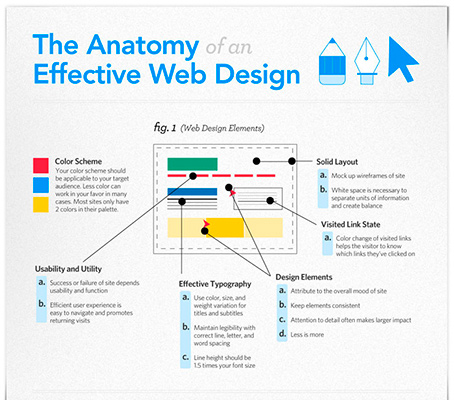Fascinated In Learning How Site Style Has Transformed Over The Years? Discover The Progression From Basic, Simple Designs To User-Centered Strategies That Focus On The Demands And Preferences Of Online Site Visitors
Fascinated In Learning How Site Style Has Transformed Over The Years? Discover The Progression From Basic, Simple Designs To User-Centered Strategies That Focus On The Demands And Preferences Of Online Site Visitors
Blog Article
Content Written By-Collier Wong
In the past, websites were easy and focused on details. https://emilianoztmex.blogdanica.com/29792810/improve-the-efficiency-of-your-website-by-utilizing-on-page-search-engine-optimization-approaches-that-improve-your-online-visibility-and-engage-your-target-audience was direct, and design was for desktops. Currently, customer experience is essential. Data guides designs for simple navigating. Receptive formats match various gadgets. Today, dark setting reduces pressure, and minimalist menus enhance navigating. Interactive features engage customers, and strong visuals stand out. AI assimilation increases involvement. See how design has progressed to improve your online trip.
Very Early Days of Website Design
In the very early days of web design, simplicity reigned supreme. Websites were basic, with minimal colors, typefaces, and formats. The emphasis was on providing information instead of flashy visuals. Customers accessed the web via slow-moving dial-up connections, so rate and performance were key.
Navigating food selections were straightforward, normally situated on top or side of the web page. Web sites were created for home computer, as mobile browsing wasn't yet widespread. Content was king, and developers prioritized very easy readability over intricate layout aspects.
HTML was the key coding language made use of, and developers had to work within its restrictions. Computer animations and interactive attributes were very little contrasted to today's requirements. Web sites were fixed, with little dynamic material or customized customer experiences.
Rise of User-Focused Style
With the advancement of internet site style, a shift in the direction of user-focused design principles has become significantly prominent. Today, producing websites that prioritize individual experience is important for involving site visitors and achieving company goals. User-focused design includes comprehending the demands, choices, and behaviors of your target market to tailor the website's design, web content, and includes accordingly.
Designers now perform comprehensive study, such as user studies and functionality screening, to collect understandings and comments straight from customers. This data-driven technique aids in developing intuitive navigation, clear calls-to-action, and aesthetically attractive interfaces that resonate with visitors. By positioning the user at the facility of the design procedure, websites can deliver an extra individualized and satisfying experience.
Responsive design has actually additionally emerged as a crucial facet of user-focused design, ensuring that websites are maximized for various devices and screen sizes. This adaptability improves ease of access and functionality, catering to the diverse methods users communicate with sites today. Fundamentally, the surge of user-focused style symbolizes a change towards developing digital experiences that prioritize the requirements and assumptions of the end user.
Modern Trends in Web Design
Explore the latest fads forming web design today. search optimization firm is dark mode layout, supplying a sleek and modern look while decreasing eye pressure in low-light atmospheres. An additional key fad is minimalist navigation, streamlining food selections and improving individual experience by focusing on essential elements. Including micro-interactions, such as animated buttons or scrolling results, can produce an extra engaging and interactive site. Responsive design remains essential, guaranteeing seamless individual experiences throughout numerous devices. Additionally, utilizing vibrant typography and unbalanced designs can include aesthetic passion and draw attention to details content.
Incorporating AI innovation, like chatbots for client support or individualized suggestions, boosts individual involvement and improves processes. Ease of access has additionally become a considerable pattern, with developers prioritizing comprehensive style methods to accommodate varied individual needs. Embracing sustainability by maximizing website efficiency for rate and efficiency is an additional arising pattern in web design. Working together with customer comments and data analytics to repeat and enhance style constantly is essential for remaining relevant in the ever-evolving electronic landscape. By embracing these modern-day patterns, you can produce a visually appealing, easy to use site that reverberates with your target market.
Conclusion
As you assess the advancement of website design from the early days to currently, you can see exactly how user-focused style has ended up being the driving pressure behind modern-day patterns.
Embrace the journey of change and adjustment in web design, always keeping the customer experience at the center.
Remain current with the current trends and modern technologies, and never stop progressing your method to develop aesthetically stunning and easy to use web sites.
Evolve, adapt, and develop - the future of web design is in your hands.
